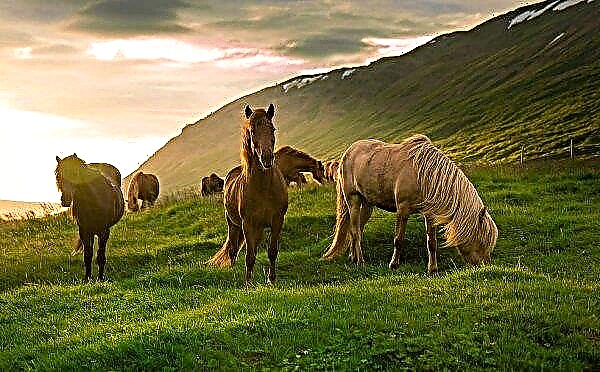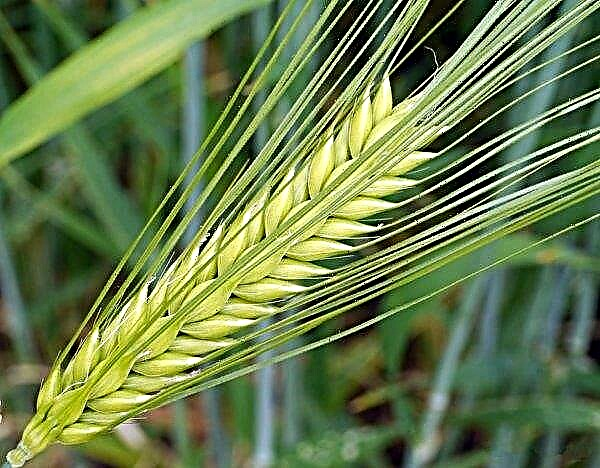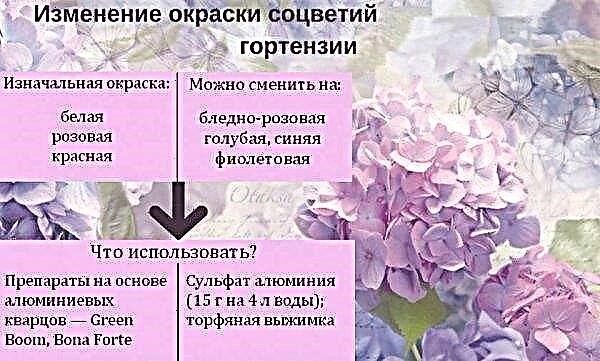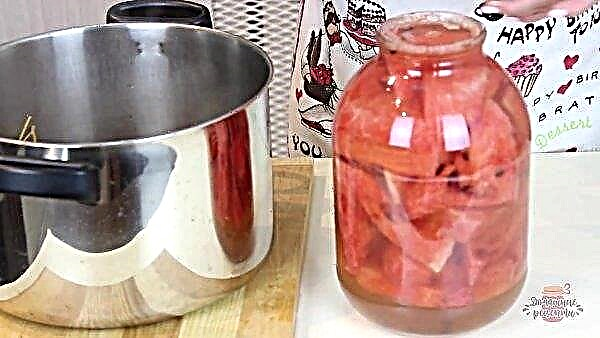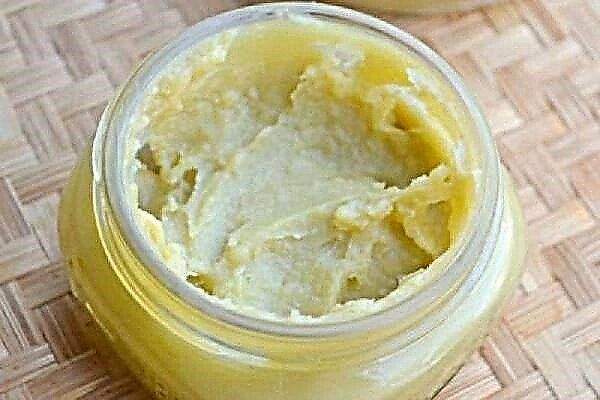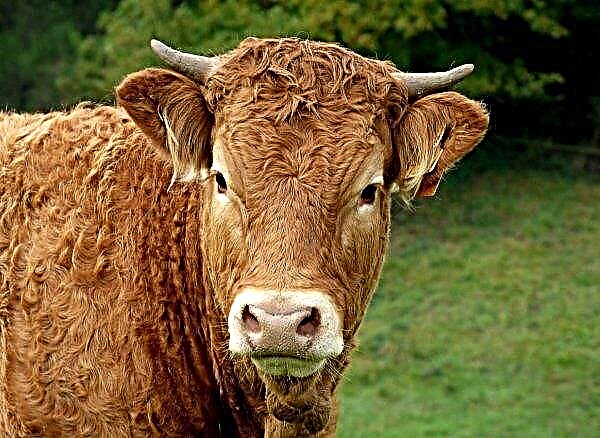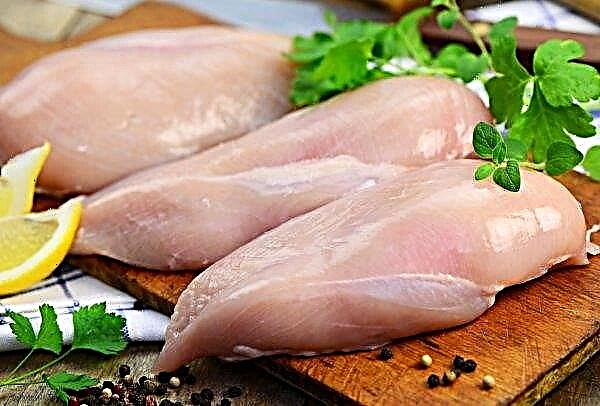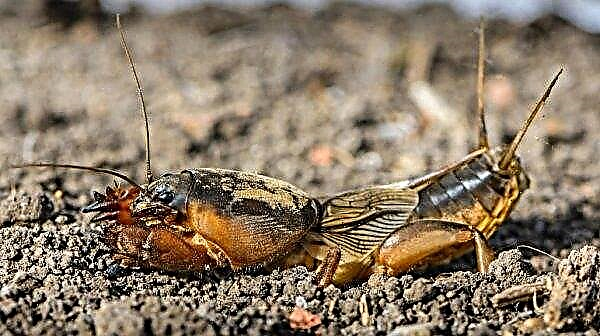The productivity of poultry in many respects depends on its full-nutrition balanced diet, therefore, despite the omnivorous ducks, they should be carefully selected for fodder taking into account the tendency of the wards to obesity. How you can feed livestock in summer and winter, how to correctly compose a diet, following the norms and rules of feeding - we will talk about this later in the article.
Types of feed for ducks
According to experts, for full development and rapid growth, ducks should be given juicy herbs, vegetables, grain, as well as animal products and vitamin-mineral supplements. All of these ingredients are the foundation of good duck health.
Did you know? The history of the cessation of hostilities between the warring Ireland and Great Britain in 1916 due to wild ducks living in the Dublin park has gone down in history. The truce was daily, but lasted only a few hours, so that the beholder could feed the birds floating in the pond.
Cereal
The regular use of dry cereal feed contributes to the intensive growth of muscle mass of the bird. In addition, a significant concentration of carbohydrates provides the wards with vital energy, which stimulates the processes of physical development.
Veterinarians believe that grain products in the diet of domestic birds should prevail. This position is justified by the high nutritional value of these ingredients, as well as their absorption coefficient, which is 80%.
Based on the benefits of grain and the richness of its nutritional components, experts compiled a rating of the most useful cereal feeds for adult ducks and small ducklings:
- Corn - It is characterized by the highest energy value among cereals due to the small amount of fiber contained is easily absorbed in the body. For sexually mature individuals, it can be half the total amount of food, and for young animals, it is recommended to reduce the food norm by 10%. Yellow corn varieties are preferred when choosing cobs, as they are rich in vitamin A and carotene.
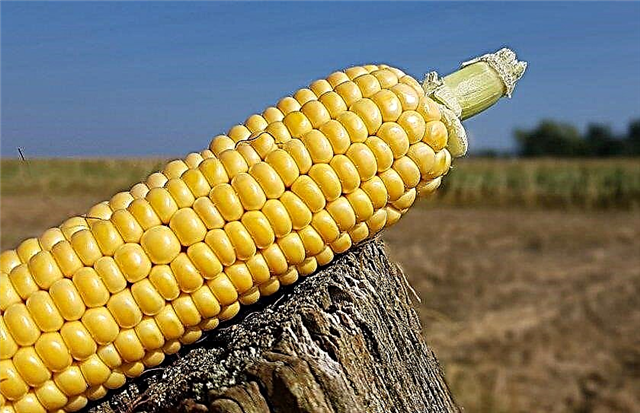
- Wheat - the grains contain about 14% of proteins, as well as tocopherol and all B vitamins. For feeding birds it is better to use coarse flour, mixing it with wet mash. However, the norm of such an ingredient should in no case exceed one third of the total weight of the feed. In addition, it is worth completely abandoning the grains ground into dust. Upon contact with moisture, such a composition begins to stick together, which is fraught with blocking the bird's nostrils.
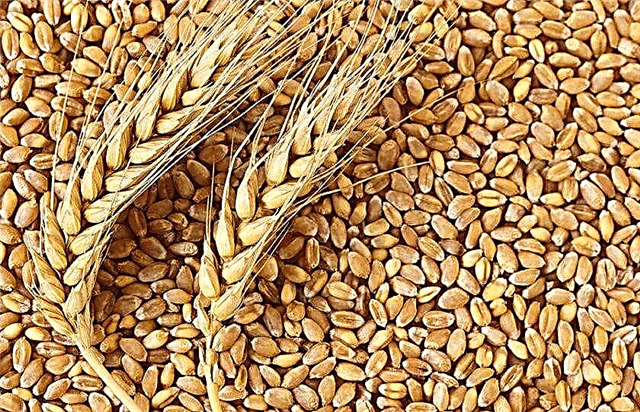
- Barley - It is also a source of valuable plant proteins, but is characterized by a high content of hard to digest fiber, which is concentrated in the grain shell. Because of this, the barley ingredient cannot exceed 30% of the total mass of the mash. In order for young growth to grow faster, it is recommended that he feed the ground and sifted grains without a peel, and it is advisable for an adult bird to give germinated barley for health.
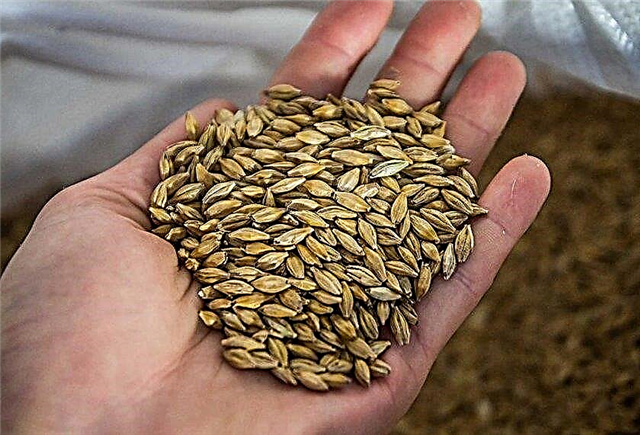
- Oats - deserves attention fatty and protein components, but is characterized by an insufficient amount of vital amino acids. It is recommended to introduce peeled grain into the duck diet.
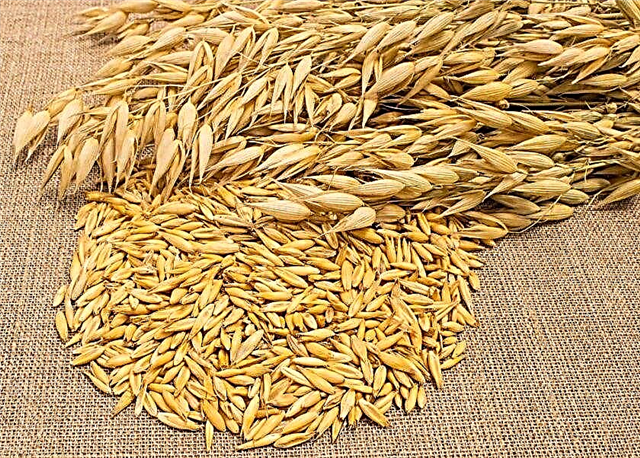
- Bean Fruits - Most often, breeders use ground peas, but limit its share to 10% of the total weight of the grain mixture. Also allowed nagut, soy. However, it should be borne in mind that ducks do not readily eat such food.
Did you know? In 1992, during the storm, one American ship was severely damaged, from the side of which a large container with 30 thousand plastic ducks was washed away by a powerful wave. During the course of these toys spread around the world, which in turn greatly helped oceanographers in the study of the underwater directions of the oceans.
Succulent feed
During the abundance of herbs, as well as the ripening of root crops, fruits and vegetables, domestic ducks can receive all the necessary nutrients directly to the pasture. And if you timely engage in the preparation of juicy feed, then the birds will be able to be content with them in the cold season.
According to experienced poultry farmers, the proportion of succulent food should correspond to half of the ducks offered food. This group includes:
- Aquatic vegetation - deserves attention rich in proteins, vitamins and minerals composition. Adults are advised to daily feed half a kilogram of duckweed or elodea per head. And young animals can be accustomed to such food from the age of five days, starting with a 15-gram serving.
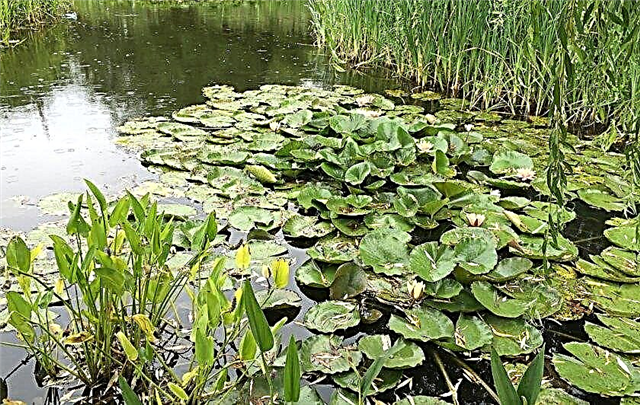
- Greenery - in a duck diet is a finely chopped grass. For duck herd will be very useful: clover, young pea stalks, alfalfa, young nettle dioecious (subject to preliminary scalding). It is advisable to cook the green mass from forbs / mixing it with wet food. It is important that, regardless of the season, the amount of green mass in the pet diet should be at least 20%.

- Silage - It is characterized by vitamin and mineral abundance and in winter is an excellent alternative to fresh fruits. In order to provide quacking wards with this kind of food, experienced breeders start harvesting it already in the summer, putting quality remains of root vegetables (carrots, sugar beets), vegetables (pumpkin), herbs (alfalfa, clover) into a special container. Previously, all ingredients must be thoroughly washed, and also crushed into particles about 5-7 mm in size. After that, it is important to properly seal the mixture for storage, excluding air zones during tamping. In a week, fermentation processes will stop in the billet. Then it can be given to ducks by adding chalk, crushed into powder, to neutralize the acidic medium (at the rate of 50 g for each kilogram of silage). Keep in mind that high-quality silage always smells like soaked apples. Introducing such food into the pet's diet should be done carefully in small doses, and it is not recommended at all for chicks who have not yet reached 3 weeks from the time of hatching.

- Vegetables - Among those allowed for domestic ducks: pumpkin (yellow varieties are preferred), carrots, cabbage, potatoes (exclusively in cooked crushed form), sugar beets. All these components are useful because of the contained vitamins, micro and macro elements, fatty organic acids. However, taking into account the quick spoilage of the fresh crop, experts advise it to silage or salt. Keep in mind that duck cabbage can only be fed in unlimited quantities, and the salting dose should correspond to no more than 15% of the total feed mass, a third of cereal can be replaced with boiled potato tubers. At the same time, ducklings up to ten days of age are strictly not recommended to give potatoes.

Animal products
If we compare the diet of wild and domesticated ducks, then in the first case, the feed compares favorably with the protein components of plant origin. We are talking about eatable insects, amphibians, small fish and invertebrates. In captivity, the bird suffers from a shortage of such food, and if the owner does not pay proper attention to this aspect of nutrition, it can reduce productivity and even become ill.
Did you know? Wild ducks can rise to the height of airplanes, overcoming 170 kilometers per hour.
PWhen growing birds, veterinarians advise compensating for the missing proteins with the following components of animal origin:
- Dairy products (fat-free cottage cheese, yogurt) - recommended for young animals, are favorably distinguished by high protein content and easy digestibility. Such food can be given to ducklings from the first days of life, avoiding fresh milk.
- Meat and bone meal - 30-50% consists of protein. It is allowed domesticated ducks from five days of age in a dosage of not more than 5% of the total weight of the feed. The portion can be increased up to 8% for average young animals, and up to 10% for an adult livestock.
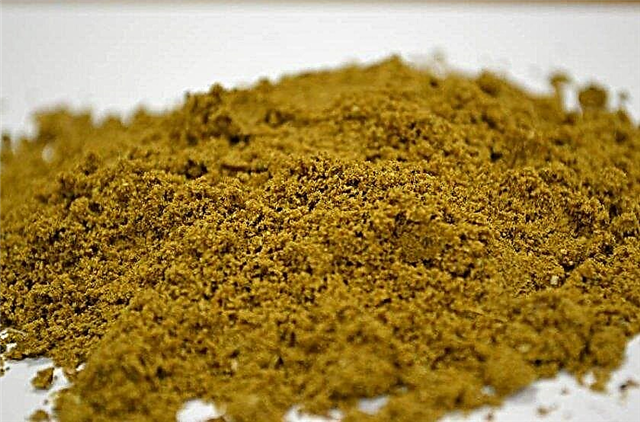
- Fish flour (fat-free up to 10%) - in the circle of utvopov it is considered the most effective, as well as convenient to use and store. In addition to proteins, its composition is enriched with calcium, phosphorus and vitamins of group B. Poultry of any age needs to add this ingredient to food daily at a dosage of about 7% of the total weight of the feed mixture. If possible, some breeders replace fishmeal with fresh minced fish. In this case, try to each of your adult wards ate 30 g of the workpiece.

Mineral and Vitamin Supplements
Many novice farmers do not understand why poultry should be stuffed with piece vitamin complexes if they have all the necessary substances in their diet. However, veterinarians strongly recommend that breeders mix with feed mixtures:
- dusted chalk (about 5-10% of the total composition);
- crushed shells size not more than 2 mm (3% is enough);
- coarse river sand (note that building material is categorically unsuitable and instead of the expected benefits will result in serious health problems for the livestock, the recommended portion for each individual is 10 g);
- bone meal (just add about 2-3 g of the vitamin component to the main feed);
- dried and ground egg shells (you can mix up to 15 g);
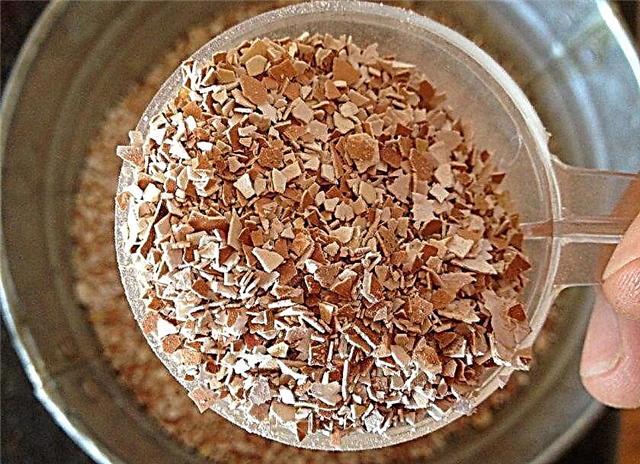
- salt (give a dosage of 0.2 g, provided that the duck diet is completely absent pickles and other salted foods);
- fine gravel (allowed up to 10 g weekly for each duck).
Important! Domestic ducks differ from other birds in their increased sensitivity to the slightest changes in the nutritional diet regarding the components of the feed mixture, their quality and quantity. Abrupt changes are fraught with a decrease in oviposition and weight gain, in addition, the bird can go into molt.
Basic feeding rules
To minimize the risks of morbidity and mortality of the livestock farmer will help the following recommendations of experienced poultry breeders:
- First of all, the breeder must understand why he is raising livestock. After all, the principles of fattening meat and egg directions are significantly different. In addition, when compiling a nutritious diet for ducks, special attention should be paid to the characteristics of the breed, as well as the origin of the chicks. This means that young animals obtained from a domestic brood quickly develop on traditional feeds and do not require special factory premixes, which cannot be said about chicks hatched in production conditions.
- Feeding small birds throughout the day should be organized in 4-5 receptions, and if we are talking about newborn chicks, then eight meals a day will be appropriate.
- If there are weak chicks among the wards with a clear lag in development and growth, before transferring them to the main feed, veterinarians advise them to organize meals for several days only with whipped yolk mass.
- The farmer must ensure that his wards have access to fresh drinking water around the clock. In addition, for the chicks it should not be cold, and the containers for drinking should be safe.
- Avoid feed forbidden for ducks (we will talk about this in more detail later).
- When preparing the diet, take into account the seasonal needs of the bird.
- When buying feed mixtures, pay attention to their purpose. That is, to buy only duck feed, taking into account the age categories of the wards.
- In no case do not give newborn chicks production feed mixtures. According to veterinarians, such food can provoke a malfunction of the internal organs of the chicks.

How to make a diet for ducks at home
Duck ration depends on the time of year and the production direction of the livestock. Experienced poultry farmers advise beginners:
- In summer, organize a herd of free access to a natural reservoir with a small current. This will greatly facilitate the process of feeding the birds to the breeder, because they will return home full. Moreover, in the natural environment, the bird will be able to provide itself with the necessary nutrients for a full life and development. Also, in the warm season, it is advisable to graze ducks in a sown with clover or alfalfa pasture. In such conditions, it is enough to feed domestic birds 2 times a day. In the event that they exclude the possibility of their own food production and the constant maintenance of ducks in the pen, it is recommended that in 4 doses daily, alternating, give pets dry or wet food. The 2 x 2 circuit works perfectly. When using it, do not forget about the need for inclusion in the diet of mineral and vitamin supplements, as well as aquatic vegetation and protein foods. In addition, the breeder must take care of the abundance of fresh green mass in duck feeders. It is advisable to pick grass about 3-4 times a day. With this approach, the livestock will be able to get everything necessary to maintain health throughout the year.

- In winter, the number of feedings is reduced, leaving only morning and evening meals. At the same time, one of them should consist of dry cereal feed, and the second of wet mash. In the cold season, duck feeders must have fish fragments, bone meal, steamed canopy, as well as dust and boiled potatoes. Thanks to these products, due to accumulated subcutaneous fat, the bird can easily survive even severe frosts.
Important! It is recommended to improve the nutrition of a breeding pair of producers through greens and sprouted grains. These ingredients are enriched with tocopherol and B vitamins, which will have a beneficial effect on egg incubation.
To increase egg production
Experienced poultry farmers transfer healthy laying hens to a special diet 20 days before the laying of eggs. This usually happens in the last January weeks. Then the breeder is recommended to increase the portion of concentrated and protein products in the composition of feed mixtures, thereby reducing the proportion of juicy and rough foods. If there are insufficiently well-fed individuals in the herd, they are transferred to the diet of laying hens one and a half months before the start of egg laying.
Such metamorphoses in the menu of feathered wards of egg direction are due to the doubled need of their organisms in calcium, phosphorus and other minerals that affect the quality and quantity of products.
Layers are fed 4 times a day. At the same time, 3 receptions are organized on wet mixers with the addition of bran and high-quality food waste (including fermented milk and meat and fish products). At night, the bird is given yeast cereal feed. In order to obtain them, it is required to dissolve 20 g of baker's yeast (can be granulated) in 1 liter of warm (not hot) water and mix the resulting sourdough with ground grain or sprouted barley and oats. Please note that the mixture must be prepared well in advance, as it must be infused for at least 8 hours. Such a composition can be added to any feed.
In order to obtain them, it is required to dissolve 20 g of baker's yeast (can be granulated) in 1 liter of warm (not hot) water and mix the resulting sourdough with ground grain or sprouted barley and oats. Please note that the mixture must be prepared well in advance, as it must be infused for at least 8 hours. Such a composition can be added to any feed.
Also, do not forget about the drinking regime of ducks. Each female egg breed requires at least 1 liter of liquid throughout the day. It is important that it is fresh, otherwise the pathogenic environment formed in the stagnant drink can provoke diarrhea in the feathered creature and a complete rejection of food.
Important! In the summer duck diet, it is recommended to reduce the number of prepared wet mixes. This is due to the concealment of spoilage of such food, which can cause the disease of birds.
More information about recommended feeds, as well as their daily allowance for laying ducks, depending on their egg production potential, can be found in the table below.
| The daily diet of egg ducks | |||||
| Recommended Food | The amount of feed (in g), depending on the eggs laid during the month | ||||
| 0–3 pieces | 3–12 pieces | 13–15 pieces | 16–18 pieces | 19 pieces and more | |
| Cereal mix | 50 | 60 | 75 | 80 | 87 |
| Coarse flour (wheat, barley, corn) | 100 | 100 | 100 | 100 | 100 |
| Cake, meal | 2,4 | 9,4 | 12 | 13,5 | 16,5 |
| Meat and fish waste | 1,6 | 6,4 | 7,8 | 9,4 | 1,5 |
| Hay flour | 40 | 40 | 40 | 40 | 40 |
| Boiled potato tubers and peeling | 60 | 40 | 40 | 40 | 40 |
| Carrot | 90 | 110 | 110 | 110 | 110 |
| Fresh grass | 90 | 110 | 110 | 110 | 110 |
| Bone flour | 1,15 | 1,45 | 1,55 | 1,65 | 1,75 |
| Shredded shells and chalk | 5,8 | 8,4 | 9,2 | 10 | 10,9 |
| Common salt | 1,1 | 1,4 | 2,5 | 1,5 | 1,7 |
For meat growing
In order for young growth to gain weight faster, experts advise to correct its nutrition and limit motor activity. Such a nutritional scheme is designed for 2.5 months from hatching of chicks to their full maturation.
Keep in mind that in the early days, the ducklings are fed with the necessary mixtures from the pipette, because the farmer, who is seriously engaged in meat breeds of birds, counts every day. Similar feeding methods are used for older weakened individuals. According to veterinarians, to quickly gain weight healthy livestock from the first days of life, it is advisable to offer finely chopped boiled hard-boiled egg, as well as fat-free curd mass.
According to veterinarians, to quickly gain weight healthy livestock from the first days of life, it is advisable to offer finely chopped boiled hard-boiled egg, as well as fat-free curd mass.
It is important that these products are fresh and of high quality, as immature young organisms react very painfully to various bacteria. In addition, it is possible to activate muscle growth in ducks with the help of a high content of vitamins and minerals in feed mixtures.
Did you know? On the short neck of a duck there are much more vertebral discs than a giraffe.
During this period, young broiler breeds that have grown up per day are recommended to organize 4-time feeding. The diet should be built according to the following scheme (based on 100 g of feed):
- 38% of crude protein of vegetable and animal origin, since in meat crosses the daily energy requirement is 556-605 kcal of crude protein (fermented milk products, peas);
- 25% calcium (crushed eggshell, cottage cheese, mineral and vitamin supplements);
- 18% of wheat (we are talking about crushed, but not crushed into dust grains);
- 5% fiber (white cabbage leaves);
- 8% phosphorus (fish waste, mussels, and fishmeal);
- 5% sodium (salt, lightly salted cucumbers, corn, red beets).
 2 weeks before slaughter, the livestock is transferred to intensive feeding. Such a diet involves an abundance of protein food, which contributes to an increase in not the fatty but the meat fraction on the bird's body. Over the course of 7 days, the breeder prepares his living creatures for the mash, in which cottage cheese and legumes prevail.
2 weeks before slaughter, the livestock is transferred to intensive feeding. Such a diet involves an abundance of protein food, which contributes to an increase in not the fatty but the meat fraction on the bird's body. Over the course of 7 days, the breeder prepares his living creatures for the mash, in which cottage cheese and legumes prevail.And further stimulates the formation of subcutaneous fat. To do this, wet mixtures based on potatoes, oatmeal, buckwheat, rice, and barley are needed. During this period, it is forbidden to feed broiler ducks fish and fishmeal.
In addition, with the active building of muscle fibers, broilers should provide round-the-clock access to drinking bowls. During the feeding period, each bird should drink at least one and a half liters of water per day.
Important! When growing ducks of meat breeds, experts strongly recommend feeding newborn chicks in the first 16-18 hours of life. This is the key to the correct development of young animals and their full life.
The table below provides detailed information about what and in what proportions can be given to meat-breeding birds.
| The daily diet of meat ducks | |||||
| Recommended feed | The amount of feed (in g), depending on the age of the bird | ||||
| 1-10 days | 11–20 days | 21–30 days | 31–50 days | 51–60 days | |
| Chopped boiled eggs (including squirrels and yolks) | 3 | — | — | — | — |
| Finely chopped greens (alfalfa, clover) | 20 (give from the 3-4th day of life) | 30 | 50 | 70 | 80 |
| Cooked meat waste | 3 (give from the 4th day of life) | 10 | 15 | 20 | 25 |
| Algae, duckweed (in the winter, the use of dry foliage of willow and willow is allowed) | 10 | 15 | 100–300 | 200–400 | up to 500 |
| Skim cheese | 3 | 8 | 10 | — | — |
| Yogurt | 5 | 10 | 20 | — | — |
| Boiled potatoes | — | 10 | 40 | 60 | 80 |
| Ground cereals (cereal mixtures) | 1,5 | 40 | 60 | 80 | 100 |
| Bran | 5 | 15 | 30 | 35 | 40 |
| Cereal waste | — | 20 | 25 | 30 | 40 |
| Ground cake and meal | 1 | 3 | 8 | 15 | 20 |
| Baking yeast | 0,2 | 0,4 | 1 | 1 | 1 |
| Chalk or shredded shells | 1 | 2 | 4 | 5 | 6 |
| Bone flour | 0,5 | 1 | 1,5 | 2 | 3 |
| Salt | — | 0,2 | 0,3 | 1 | 1 |
| Fine Gravel | — | 1 | 1 | 2 | 2 |
| Seeds of wild herbs (quinoa, burdock, millet, chirits), chestnuts, acorns, as well as rowan berries, elderberries, viburnum, hawthorn, grapes) | — | 15 | 25 | 35 | 45 |
Features of feeding young animals
In order for the duck population to be in good health and resistant to a number of common diseases, experts advise to pay special attention to the first feeding of newborn chicks.
Did you know? Only females make quacking, and the drakes are silent.
A correctly set start, regardless of the direction of the breed, will allow young growth to develop correctly. Further in the table, we will analyze in detail the daily diet of the chicks.
| The daily diet of ducklings | |||
| Recommended feed | The amount of feed (in g), depending on the age category of the chicks | ||
| 1–10 days | 11–20 days | 21–30 days | |
| Compound feed | 25 | 70 | 110 |
| Greens (in the summer season) | 15–20 | 60 | 90 |
| Silo (in the cold season) | — | 10 | 15–20 |
| Food waste | — | 15–20 | 30–40 |
| Needles | 0,3 | 1 | 2 |
| Chopped pieces of boiled potato tubers | — | 10 | 15 |
| Curd (non-greasy) | 3–5 | — | — |
| Boiled eggs | 3 | — | — |
| Aquatic vegetation | 10 | 15 | 100–300 |
| Fish or bone meal | 0,5 | 1,5 | 3 |
| Baking yeast | 0,2 | 0,4–0,5 | 0,8 |
| Mineral supplements | — | 1 | 1 |
What not to feed ducks
Despite the excellent appetite of a healthy duck livestock, veterinarians identify a group of prohibited foods that are dangerous to the health of feathered wards. These include:
- excessively crushed grains of permitted cereals (flour, when glued, clogs the bird's nasal openings, thereby causing choking);
- poor-quality food waste (such food is fraught with malfunctions in the digestive organs of pets);
- crumbs of white, black and gray bread, including soaked bread (bakery products provoke the development of aspergillosis);
- various cereals, especially boiled in milk (the ban applies only to ducklings, since this kind of food destroys the digestive tract in a fragile body);
- fresh milk (the ban applies to young animals due to the difficulty to control the onset of souring of the product, such food causes diarrhea in ducklings and can lead to death);
- poisonous greens, in particular, black hen, celandine, gingerbread, poisonous milestone, hemlock (in order to avoid accidental ingestion of unwanted plants, one should carefully consider armfuls of torn herbs);
- not scalded nettle dioecious (glandular hairs of the plant burn the walls of the stomach of birds and cause irritation);
- maple leaves (provoke livestock mortality);
- chips, sweets and any confectionery (such food undermines the digestion of ducks).
Did you know? For prey domestic duck can dive to a six-meter depth.
Properly balanced nutrition of ducks allows the owner to solve several problems at once: strengthen immunity for pets, increase the productivity and survival of the herd. In addition, these birds can take care of their daily menu themselves. The main thing is to give them access to free grazing and a small rivulet.













